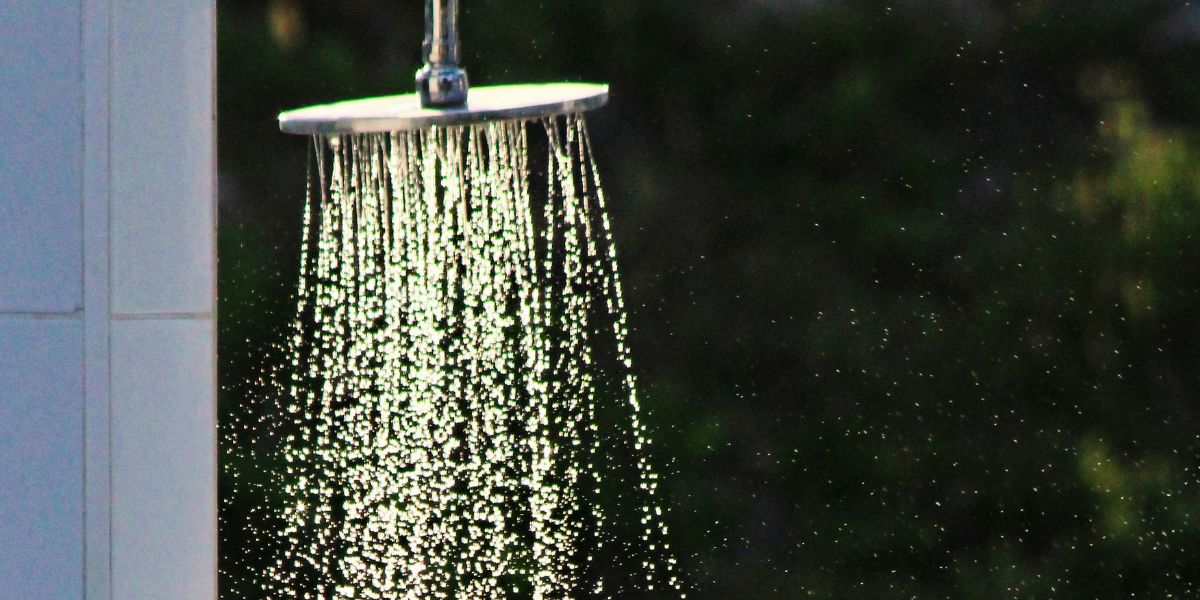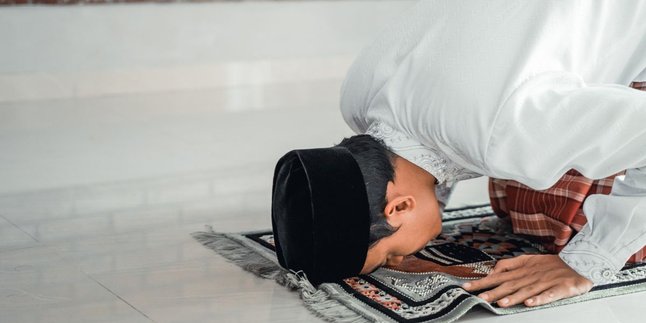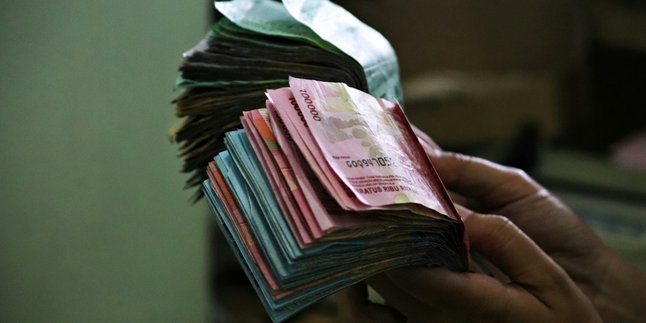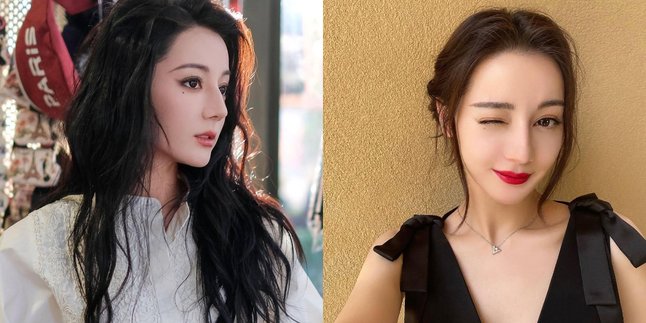Kapanlagi.com - Bathing or washing hair on Eid al-Adha is not just an ordinary cleanliness routine, you know! Behind this moment lies a sunnah practice rich in spiritual meaning in welcoming this holy day. Washing hair becomes a symbol of self-purification, both physically and spiritually, allowing us to start the festive day with a clean heart and soul.
For Muslims, celebrating Eid al-Adha is more than just a celebration; it is a time to deeply experience worship, including performing the sunnah bath. However, many are still confused about how to properly carry out this washing. What are the steps? When is the ideal time for the washing? And equally important, what is the religious view regarding the law of bathing on Eid al-Adha?
In this article, we will answer all those questions with comprehensive explanations. Starting from the intention, the steps to perform it, to the right timing and its legal status, everything will be discussed in detail to provide a clear understanding for every Muslim who wishes to follow this sunnah. Let's check out the complete guide for performing the Eid al-Adha washing that has been summarized by KapanLagi.com this Tuesday (15/4)!
1. Intention for Bathing on Eid al-Adha
According to Nu Online, bathing on Eid al-Adha is one of the highly recommended Sunnah practices before performing the Eid al-Adha prayer. The intention in this bath is very important because without a clear intention, the bath cannot be categorized as a Sunnah bath. To begin the bathing for Eid al-Adha, Muslims need to verbally and mentally express the intention with the following recitation:
'نَوَيْتُ الْغُسْلَ لِعِيْدِ اْلأَضْحَى سُنَّةً لِلَّيِ تَعَالَى'
Nawaitul ghusla li'idil adha sunnatan lillahi ta'ala
Meaning: 'I intend to perform the Sunnah bath for Eid al-Adha for the sake of Allah Ta'ala.'
This intention differentiates between bathing for the purpose of worship and a regular bath. By expressing the intention, one shows their seriousness in performing this act as part of worship that can bring rewards. Additionally, the intention also aims to purify the body and prepare oneself to welcome the holiday in a physically and spiritually clean state.
This bathing is also recommended not only for those who will perform the Eid al-Adha prayer but also for Muslims who want to celebrate the holiday in a state of purity, such as women who are menstruating or postpartum.
2. Step by Step for Bathing on Eid al-Adha
The Idul Adha shower must be performed correctly to be considered valid according to Sharia. Here are the steps that need to be followed:
- Reading Intention: Before starting the shower, read the intention in your heart and aloud: “Nawaitul-ghusla li ‘Idil Adha lillahi ta’ala,” which means “I intend to perform the sunnah shower for Idul Adha for the sake of Allah Ta’ala.”
- Washing Hands: The first step is to wash both hands three times with running water. This is done to clean the hands before touching the body.
- Cleaning Impurities: After washing your hands, ensure that the body is free from impurities. Clean areas of the body that may be contaminated, such as the genital area and other parts of the body. This step is important to ensure overall cleanliness of the body.
- Pouring Water on the Head and Body: Pour water over the head three times with running water. After that, continue pouring water over the body starting from the right side, followed by the left side. Ensure that water flows evenly over the entire body, including the hair and between the body parts.
- Performing Wudu: After showering, perform wudu to cleanse yourself from minor impurities. This ablution is important to ensure that the body is truly pure and ready to perform the prayer.
After following these steps, the body will feel fresh and pure, ready to perform the Idul Adha prayer with a sincere and focused heart.
3. When is the Right Time to Bathe on Eid al-Adha?
The night before Eid al-Adha is a blessed time to perform the bath, but it is highly recommended to do so after dawn on the day of the celebration. This sunnah bath should ideally be performed after the break of dawn, so that our deeds are valid and accepted. Although some scholars permit bathing to start from midnight, doing it after the Fajr prayer is still the best. In addition to providing physical freshness, this bath also prepares our souls for worship, especially during the Eid al-Adha prayer. However, remember that bathing done too early, such as before midnight, is not considered valid. So, make sure to perform it at the right time to gain blessings and abundant rewards.
4. What is the Ruling on Bathing on Eid al-Adha?
The bath on Eid al-Adha is a sunnah muakkad, which means it is highly recommended although not obligatory. By performing this bath, we have the opportunity to gain additional rewards and start the celebration in a state of purity and cleanliness. The Prophet Muhammad (SAW) is known to have bathed on the days of Eid al-Fitr and Eid al-Adha, making this practice a symbol of physical and spiritual readiness to welcome such special moments. Although not performing it does not incur sin, this sunnah bath remains a beautiful way to attain blessings on the holiday. However, it is important to remember that the performance of the Eid al-Adha prayer is still valid even without the bathing.
5. What is Idul Adha Bathing?
Idul Adha bathing is a meaningful sunnah ritual for Muslims, performed to purify oneself before conducting the Idul Adha prayer. More than just maintaining physical cleanliness, this bath also serves as a cleansing of the soul, preparing the heart to welcome the festive day with purity. In performing the bathing ritual, Muslims follow specific steps, starting from reciting the intention to pouring water over the entire body, as a form of sincere devotion. Although it is not obligatory, this sunnah bathing symbolizes readiness and obedience to celebrate Idul Adha with cleanliness and spiritual enthusiasm, and it offers the opportunity to earn rewards for those who perform it sincerely.
6. Questions and Answers About Idul Adha Bathing
What is Idul Adha bathing?
Idul Adha bathing is a sunnah bath performed before the Idul Adha prayer to purify oneself physically and spiritually.
When is the best time to bathe for Idul Adha?
The best time to bathe for Idul Adha is after dawn on the morning of the holiday, although some scholars also allow bathing to start from midnight.
Is Idul Adha bathing obligatory?
Idul Adha bathing is a sunnah muakkad, which means it is highly recommended but not obligatory. Not performing it is not sinful.
How to properly perform Idul Adha bathing?
Idul Adha bathing is performed by reciting the intention, washing the hands, cleaning impurities, pouring water over the head and body, and performing ablution.
What are the benefits of Idul Adha bathing?
Idul Adha bathing provides benefits of refreshing the body and purifying oneself to perform the Idul Adha prayer with focus and sincerity.
(kpl/mni)
Disclaimer: This translation from Bahasa Indonesia to English has been generated by Artificial Intelligence.












